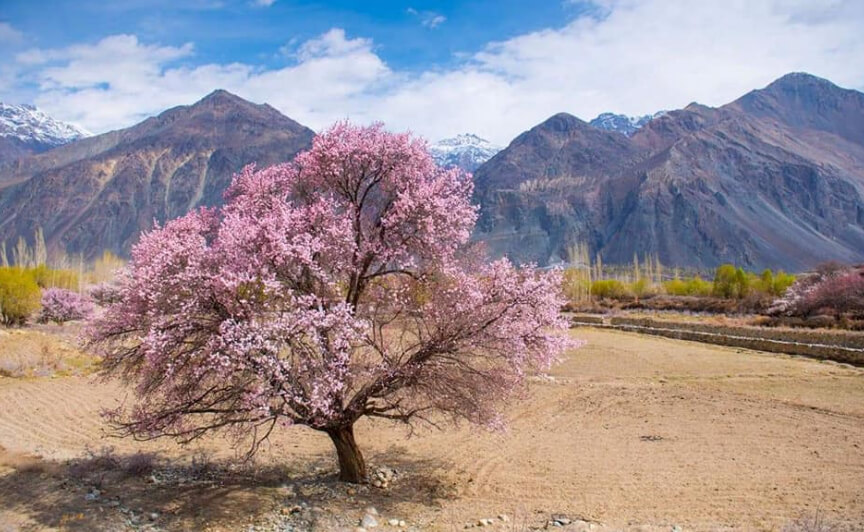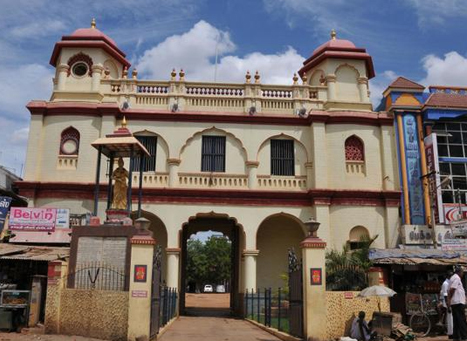Nestled in the serene hills of Himachal Pradesh, Shikari Devi Wildlife Sanctuary is a hidden gem. It promises an unforgettable experience for nature enthusiasts and adventure seekers alike.
Shikari Devi Wildlife Sanctuary is not just a sanctuary; it’s a paradise for wildlife lovers. The sanctuary spans across lush green hills, offering a haven for diverse flora and fauna. Home to species like leopards, black bears, and various birds, it serves as a living gallery of nature’s wonders.
The sanctuary also houses the ancient Shikari Devi Temple, adding a touch of spirituality to your visit. Whether you’re trekking through its scenic trails or simply soaking in the natural beauty, Shikari Devi Wildlife Sanctuary ensures a peaceful retreat from the hustle and bustle of city life.

Credit: www.tourmyindia.com
Introduction To Shikari Devi Wildlife Sanctuary
Shikari Devi Wildlife Sanctuary is a hidden gem in Himachal Pradesh. It offers a unique blend of natural beauty and rich history. This sanctuary attracts nature lovers and history enthusiasts alike. Nestled in the lap of the Himalayas, it provides a serene escape from urban life.
Location And Accessibility
Shikari Devi Wildlife Sanctuary is located in the Mandi district of Himachal Pradesh. It spans over 15 square kilometers. The sanctuary is perched at an altitude of 2850 meters. It is accessible via road from Mandi town, which is about 80 kilometers away.
The nearest airport is Bhuntar, located 105 kilometers from the sanctuary. Public transport options are available from Mandi to Janjehli, the base point for the sanctuary. From Janjehli, trekkers can reach the sanctuary on foot or by jeep.
Historical Significance
Shikari Devi temple is the heart of the sanctuary. This ancient temple dates back thousands of years. It is dedicated to Shikari Devi, the Goddess of Hunters. The temple has no roof, as per local legends. It is believed that no one has been able to build a roof over the temple.
Locals and visitors hold the temple in high reverence. It is a site for annual fairs and festivals. The sanctuary has a mystical aura due to its historical background. This makes it a unique destination for those interested in history and spirituality.
Flora And Fauna
Shikari Devi Wildlife Sanctuary, nestled in the Mandi district of Himachal Pradesh, is a haven for nature lovers. The sanctuary boasts a rich variety of flora and fauna. This diverse ecosystem offers a unique experience for visitors. Let’s explore the flora and fauna of this beautiful sanctuary.
Diverse Plant Species
The sanctuary’s plant life is stunning. Dense forests cover much of the area. You can find oak, pine, and deodar trees. These trees provide shelter to many animals. The undergrowth includes ferns and shrubs. Wildflowers bloom in many colors during spring. Medicinal plants grow here too. They are used in traditional remedies.
Wildlife Inhabitants
Shikari Devi Wildlife Sanctuary is home to many animals. You might spot leopards and black bears. They roam freely in the forests. The sanctuary also hosts barking deer and goral. These shy animals are often seen at dawn or dusk. Birds add to the sanctuary’s charm. Watch for the colorful pheasants and Himalayan monals. They are a treat for bird watchers.
Reptiles and amphibians live here too. You might see lizards and frogs near water bodies. Each creature plays a role in the ecosystem. They keep the balance of nature intact. Protecting these wildlife inhabitants is crucial.
Bird Watching Paradise
Shikari Devi Wildlife Sanctuary is a hidden gem for bird watchers. The sanctuary, nestled in the serene hills of Himachal Pradesh, offers a tranquil setting. It is a paradise for bird enthusiasts. The rich biodiversity and untouched natural beauty make it a perfect haven for bird watching.
Resident Bird Species
The sanctuary is home to many resident bird species. You can spot the Himalayan Monal, the state bird of Himachal Pradesh. Other common sightings include the Koklass Pheasant and the Cheer Pheasant. Woodpeckers, thrushes, and flycatchers add to the vibrant avian population. Each visit offers a new bird watching experience.
Best Seasons For Bird Watching
Spring and summer are the best seasons for bird watching. During these months, birds are more active and visible. The lush greenery and blooming flowers attract many species. Early mornings are ideal for spotting birds.
Autumn also offers good bird watching opportunities. Migratory birds begin to arrive as the weather cools down. Their presence adds more variety to the sanctuary’s avian life.

Credit: mysterioushimachal.wordpress.com
Trekking And Adventure
Explore the stunning Shikari Devi Wildlife Sanctuary, perfect for trekking and adventure lovers. Discover diverse flora and fauna in a serene setting. Enjoy breathtaking views and peaceful trails.
Trekking and Adventure Embarking on a trek through Shikari Devi Wildlife Sanctuary offers a perfect blend of adventure and natural beauty. Nestled in the serene landscapes of Himachal Pradesh, this sanctuary is a haven for trekkers. Whether you are an experienced trekker or a beginner, the trails here promise a thrilling experience. Ready to lace up your boots and explore? Here’s everything you need to know about trekking and adventure in Shikari Devi Wildlife Sanctuary.Popular Trekking Routes
One of the most popular routes is the trek from Janjehli to Shikari Devi Temple. This trail is approximately 16 kilometers long and takes you through dense forests, open meadows, and rugged terrains. The panoramic views along the way are breathtaking. You’ll spot various flora and fauna unique to the region, making it a perfect trail for nature enthusiasts. Another favored route is from Karsog Valley to Shikari Devi. This trek is slightly shorter, around 12 kilometers, but equally rewarding. The path is dotted with small villages where you can interact with locals and learn about their culture. For those seeking a more challenging experience, the trek from Chindi to Shikari Devi should be on your list. This route is about 18 kilometers and tests your endurance with its steep ascents. However, the stunning views from the top make every step worth it.Safety Tips For Trekkers
1. Plan Your Trek: Know the route and its difficulty level. Inform someone about your trekking plans and expected return time. 2. Gear Up: Wear appropriate trekking shoes and carry essential gear like a first-aid kit, water, and snacks. A trekking pole can be a great aid on steep paths. 3. Stay Hydrated: Always carry enough water. Dehydration can sneak up on you, especially at higher altitudes. 4. Weather Check: The weather in the mountains can change rapidly. Check the forecast and avoid trekking during extreme weather conditions. 5. Respect Wildlife: Remember, you’re in their home. Maintain a safe distance from animals and never feed them. 6. Stay on the Trail: Venturing off the path can be dangerous. Stick to marked trails to ensure safety. 7. Travel in Groups: Trekking in numbers is safer. If you’re a solo trekker, consider joining a group or hiring a local guide. Are you excited to experience the thrill of trekking in Shikari Devi Wildlife Sanctuary? The adventure awaits! Remember, preparation is key to a safe and enjoyable trek. What route are you most excited to explore? Share your thoughts in the comments below!Cultural And Religious Significance
Shikari Devi Wildlife Sanctuary is more than just a haven for flora and fauna. It holds deep cultural and religious significance. This sanctuary is a place where nature meets spirituality. Ancient traditions and rituals blend seamlessly with the natural beauty of the region. The area is revered by locals and visitors alike.
Shikari Devi Temple
The Shikari Devi Temple stands atop a hill in the sanctuary. This ancient temple is dedicated to the Goddess Shikari Devi. It is believed to be one of the oldest temples in the region. Pilgrims trek up the hill to seek blessings and offer their prayers. The temple has no roof, which is a unique feature. Locals believe the goddess herself protects the temple. This adds to the mystique and allure of the place.
Local Traditions And Festivals
Shikari Devi Wildlife Sanctuary is alive with local traditions and festivals. The most notable celebration is the Shikari Devi fair. Held annually, this festival attracts devotees from far and wide. People gather to honor the goddess with music, dance, and rituals. Local folklore and tales are passed down through generations here. The community spirit during these festivals is palpable. These traditions offer a glimpse into the rich cultural heritage of the region.
Accommodation And Stay Options
When visiting the Shikari Devi Wildlife Sanctuary, choosing the right accommodation can make your trip even more memorable. Whether you prefer eco-friendly lodges or the raw experience of camping sites, there are options that cater to every kind of traveler. Let’s explore the accommodation and stay options that you can look forward to.
Eco-friendly Lodges
Eco-friendly lodges within the sanctuary are perfect if you want comfort while staying close to nature. These lodges are designed to minimize environmental impact, often using sustainable materials and practices.
During my last visit, I stayed at an eco-lodge nestled in the heart of the sanctuary. The lodge used solar panels for electricity and rainwater harvesting for its water supply. Waking up to the sounds of chirping birds and rustling leaves added a magical touch to my mornings. The staff was incredibly knowledgeable about the local flora and fauna, offering guided tours that provided deeper insights into the sanctuary’s ecosystem.
Are you someone who loves blending luxury with sustainability? These lodges offer comfortable beds, hot showers, and even local, organic meals that will make your stay both relaxing and enriching.
Camping Sites
If you crave a more adventurous experience, camping sites are an excellent choice. Imagine sleeping under a blanket of stars, surrounded by the sounds of the wild. The sanctuary has designated camping areas that ensure safety while letting you immerse in the wilderness.
On one of my trips, I opted for a camping site near a scenic viewpoint. Setting up a tent and cooking over an open flame made me feel deeply connected to the natural world. That night, I witnessed a sky full of stars like never before. It was a humbling experience that made me appreciate the simplicity and beauty of nature.
When was the last time you slept under the stars? If you haven’t tried it yet, the Shikari Devi Wildlife Sanctuary offers a perfect opportunity. Just make sure to follow the sanctuary’s guidelines to protect the environment and your safety.
Whether you choose an eco-friendly lodge or a camping site, your stay at Shikari Devi Wildlife Sanctuary will be an unforgettable adventure. What kind of experience are you looking for? Choose wisely and enjoy your stay!
Conservation Efforts
Shikari Devi Wildlife Sanctuary focuses on preserving its rich biodiversity. Efforts include habitat protection and anti-poaching measures. These initiatives help safeguard endangered species.
Shikari Devi Wildlife Sanctuary, nestled in the serene mountains of Himachal Pradesh, is a haven for wildlife enthusiasts and nature lovers. The sanctuary’s conservation efforts have been pivotal in preserving its rich biodiversity. These efforts are not just about protecting flora and fauna, but also about engaging local communities and fostering a sustainable environment. Let’s delve into some of the key conservation initiatives and the role of the local community in these efforts.Protection Initiatives
Effective conservation begins with robust protection initiatives. Shikari Devi Wildlife Sanctuary has implemented several measures to safeguard its unique ecosystem. Anti-poaching Patrols: Regular anti-poaching patrols are conducted to monitor and prevent illegal hunting and logging. These patrols are equipped with modern tools and technology to track and apprehend offenders. Habitat Restoration: Efforts are underway to restore degraded habitats. Native plant species are replanted to ensure that the natural balance of the ecosystem is maintained. This helps in providing food and shelter for the wildlife. Wildlife Corridors: Creating and maintaining wildlife corridors is another significant step. These corridors allow animals to migrate safely between different parts of the sanctuary, reducing the risk of inbreeding and promoting genetic diversity. Research and Monitoring: Continuous research and monitoring of wildlife populations help in understanding the health of the ecosystem. This data is crucial for making informed decisions regarding conservation strategies.Community Involvement
Conservation efforts at Shikari Devi Wildlife Sanctuary are not limited to official initiatives. The involvement of local communities plays a crucial role in ensuring the success of these efforts. Awareness Programs: Regular awareness programs are conducted to educate the local population about the importance of conservation. These programs highlight the benefits of preserving the sanctuary for future generations. Eco-tourism: Local communities are encouraged to participate in eco-tourism activities. This not only provides them with a sustainable source of income but also fosters a sense of responsibility towards protecting the sanctuary. Visitors, too, gain a deeper appreciation of the natural beauty and biodiversity of the area. Traditional Knowledge: The indigenous knowledge of the local communities is invaluable. Their traditional practices often align with conservation goals. By integrating this knowledge with modern conservation techniques, a more effective approach is achieved. Volunteer Programs: Opportunities for volunteering in conservation activities are available for both locals and visitors. These programs include activities such as tree planting, habitat clean-up, and wildlife monitoring. When I visited Shikari Devi, I joined a local group for a tree-planting drive. The experience was eye-opening. I saw firsthand how dedicated the local communities are to protecting their environment. It made me wonder, could more sanctuaries benefit from such deep community involvement? By actively involving the community, Shikari Devi Wildlife Sanctuary not only protects its rich biodiversity but also ensures that conservation efforts are sustainable and inclusive. How can you contribute to such efforts in your own community?Travel Tips And Recommendations
Planning a trip to Shikari Devi Wildlife Sanctuary? This guide offers essential tips for a smooth and enjoyable visit. From the best time to visit to what you should pack, we’ve got you covered.
Best Time To Visit
The ideal time to explore Shikari Devi Wildlife Sanctuary is from March to November. During these months, the weather remains pleasant and the trails are accessible. Avoid the monsoon season. The heavy rains can make trekking dangerous and trails slippery.
Essential Packing List
Pack light but ensure you have all essentials. Comfortable trekking shoes are a must. Carry a waterproof jacket, especially if visiting in the early months. A good backpack to hold water, snacks, and a first-aid kit is crucial. Don’t forget a camera to capture the stunning scenery. Binoculars can enhance your wildlife spotting experience. Sunscreen and a hat will protect you from the sun. A reusable water bottle helps you stay hydrated. Pack some energy bars to keep your energy up during long treks.

Credit: www.facebook.com
Frequently Asked Questions
What Is Shikari Devi Wildlife Sanctuary Famous For?
Shikari Devi Wildlife Sanctuary is famous for its diverse flora and fauna. It also offers stunning landscapes and trekking opportunities.
How Far Is The Trek In Shikari Devi?
The Shikari Devi trek is approximately 16 kilometers long. This trek offers stunning views and takes around 5-6 hours to complete.
Which Is The Most Famous Wildlife Sanctuary?
The most famous wildlife sanctuary is Jim Corbett National Park in India. It’s renowned for its Bengal tiger population and diverse wildlife.
What Is The Ticket Price Of Kais Wildlife Sanctuary?
The ticket price for Kais Wildlife Sanctuary is INR 50 for Indian nationals and INR 200 for foreign tourists. Children below five years enter for free.
Conclusion
Shikari Devi Wildlife Sanctuary offers a unique experience for nature enthusiasts. Explore diverse flora and fauna in serene settings. Enjoy breathtaking views and peaceful surroundings. Witness rare species and captivating landscapes. Plan a visit for a memorable adventure. Nature lovers will cherish every moment here.
This sanctuary promises an enriching experience for all visitors. Make sure Shikari Devi is on your travel list. Embrace the beauty and tranquility it offers. Discover the magic of this hidden gem.
{ “@context”: “https://schema.org”, “@type”: “FAQPage”, “mainEntity”: [ { “@type”: “Question”, “name”: “What is Shikari Devi Wildlife Sanctuary famous for?”, “acceptedAnswer”: { “@type”: “Answer”, “text”: “Shikari Devi Wildlife Sanctuary is famous for its diverse flora and fauna. It also offers stunning landscapes and trekking opportunities.” } } , { “@type”: “Question”, “name”: “How far is the trek in Shikari Devi?”, “acceptedAnswer”: { “@type”: “Answer”, “text”: “The Shikari Devi trek is approximately 16 kilometers long. This trek offers stunning views and takes around 5-6 hours to complete.” } } , { “@type”: “Question”, “name”: “Which is the most famous wildlife sanctuary?”, “acceptedAnswer”: { “@type”: “Answer”, “text”: “The most famous wildlife sanctuary is Jim Corbett National Park in India. It’s renowned for its Bengal tiger population and diverse wildlife.” } } , { “@type”: “Question”, “name”: “What is the ticket price of Kais Wildlife Sanctuary?”, “acceptedAnswer”: { “@type”: “Answer”, “text”: “The ticket price for Kais Wildlife Sanctuary is INR 50 for Indian nationals and INR 200 for foreign tourists. Children below five years enter for free.” } } ] }




